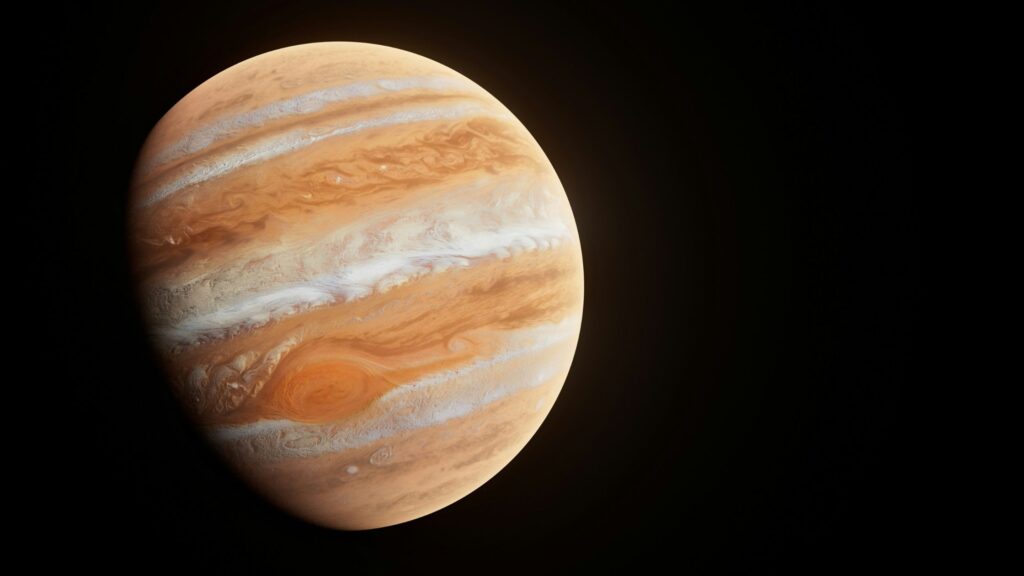Space exploration is one of the most interesting fields of human endeavour. It reveals answers about our existence and our position in the vast cosmos. That’s why various space agencies and individuals are fascinated with the solar system. Moreover, to explore the universe, there is a need for technology that can be launched into space and transmit the data back to Earth. One such interesting project is the Jupiter Icy Moons Explorer, which aims to seek information about the biggest celestial bodies and satellites of the solar system. So, let’s learn more about the explorer and how it can help scientists to understand the origin of life in the universe.
More About Jupiter Icy Moons Explorer
The Jupiter Icy Moons Explorer, or JUICE, is a space mission launched on April 14, 2023, by the collaboration of NASA and ESA. It is one of the biggest space exploration projects in the world and aims to study Jupiter and its moons—Ganymede, Callisto, and Europa. It is a complete and in-depth study of the biggest planet in the solar system and its natural satellites.
- Launch Date: 14 April 2023
- Location: Europe’s Spaceport in French Guiana
- Launch vehicle: Ariane 5
- Arrival at Jupiter: July 2031
The Focus on Jupiter and Its Moons
Jupiter is one of the most interesting planets in the solar system. It’s the biggest gas giant and has interesting atmospheric conditions where it is not only impossible to land but even to fly. However, this is not the case for its moon, especially Europa, which is composed of oceans below the icy layer. There’s a possibility of subsurface oceans, which may foster favourable conditions for life, and that’s the mission of JUICE—to get more insights about the planet and moons.
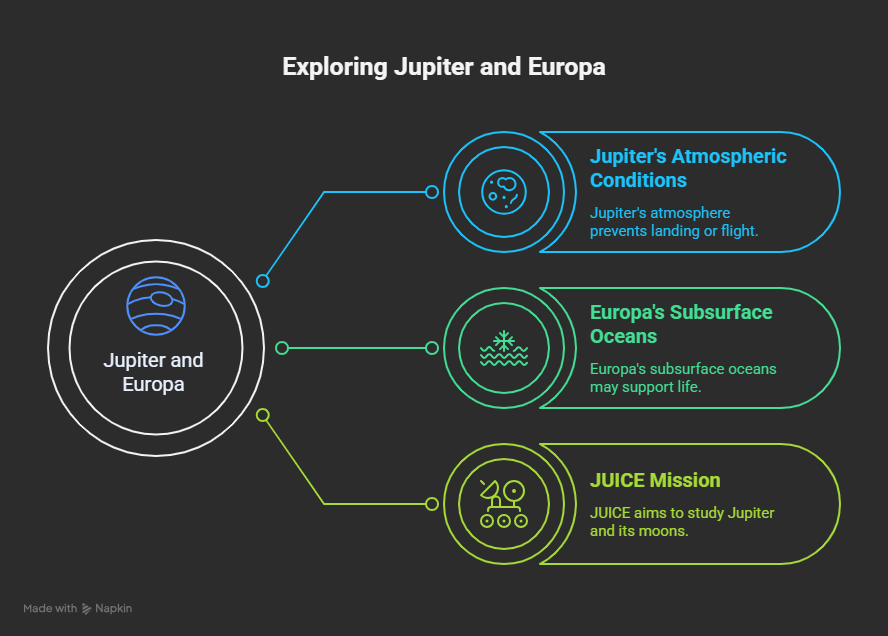
The Icy Moons of Jupiter
Jupiter’s moons are very interesting since each of them possesses a great aspect of exploration. When the JUICE reaches near the surface, it will reveal secrets about the natural satellite of Jupiter. On top of that, it can help scientists to amend new information on the preexisting assumptions about the solar system. Moreover, the three moons were selected because of their existing astrobiological implications and revelations.
- Ganymede
- Europa
- Callisto
Scientific Objectives and Goals of JUICE
Coming back to the aim of the mission, there is an emphasis on astrobiology. Using JUICE, scientists aim to discover beyond the ice crusts of Jupiter’s moon. At the same time, the mission also promises to give an understanding of magnetic interaction on the planet’s surface. Also, the spacecraft is equipped with sensors for searching for biosignatures and habitability markers.
- Geology.
- Surface composition.
- Atmosphere.
Spacecraft Design for Jupiter Icy Moons Explorer
The spacecraft is brilliantly designed for the mission since reaching Jupiter is not an easy task. On top of that, it will take around seven and a half years for the spacecraft to reach the destination. So, considering the length or duration of the voyage, it is equipped with large solar panels. These will help to power the systems and get the system to its destination.
- Launch Dimensions: 4.09 m × 2.86 m × 4.35 m.
- Deployed Dimensions: 16.8 m × 27.1 m × 13.7 m.
- Dry Mass: ~2,420 kg.
- Propellant: ~3,650 kilograms.
- Payload Mass: ~280 kilograms.
JUICE’s Journey to Jupiter
The mission is one of the longest voyages across space, and a key milestone for the explorer is to reach the Jovian system. That’s why the system is equipped with solar panels that will facilitate the exploration before it enters Jupiter’s gravitational field.
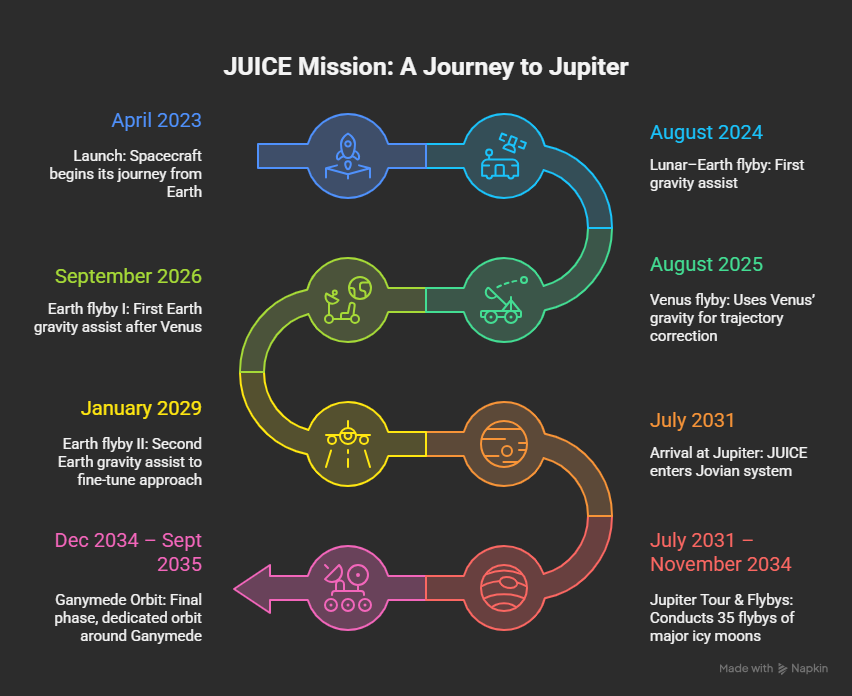
Planned Mission Phases of Jupiter Icy Moons Explorer
The explorer will have flybys of Jupiter’s different moons. Moreover, it will have orbital insertion around Ganymede for additional information. The mission also employs the best data collection strategies, which are calibrated for each phase. And yes, there are challenges to the whole mission, but JUICE is capable of delivering with anticipated solutions.
- 10 Instruments.
- 85 square meters of solar wings.
- 35 Jovian moon flybys
Technological Challenges for Jupiter Icy Moons Explorer
Any space mission is prone to different obstacles of deep space exploration. After all, space is a very hostile environment where it’s very difficult for equipment to prevent erosion. And JUICE will also face many issues that can jeopardise the whole mission, resulting in loss of valuable time and capital.
- Operating solar panels so far from the Sun
- Radiation hazards near Jupiter
- Communication delays
- autonomy in spacecraft decisions
- Longevity of spacecraft systems
Global Scientific Collaboration
The JUICE mission is a great initiative of NASA and ESA. It is one of the many projects that will take place in the future. Moreover, it’s a marker of building relationships across the world where data sharing contributes to overall research. It simultaneously promotes research beyond borders and helps scientists to translate the transmitted data effectively.
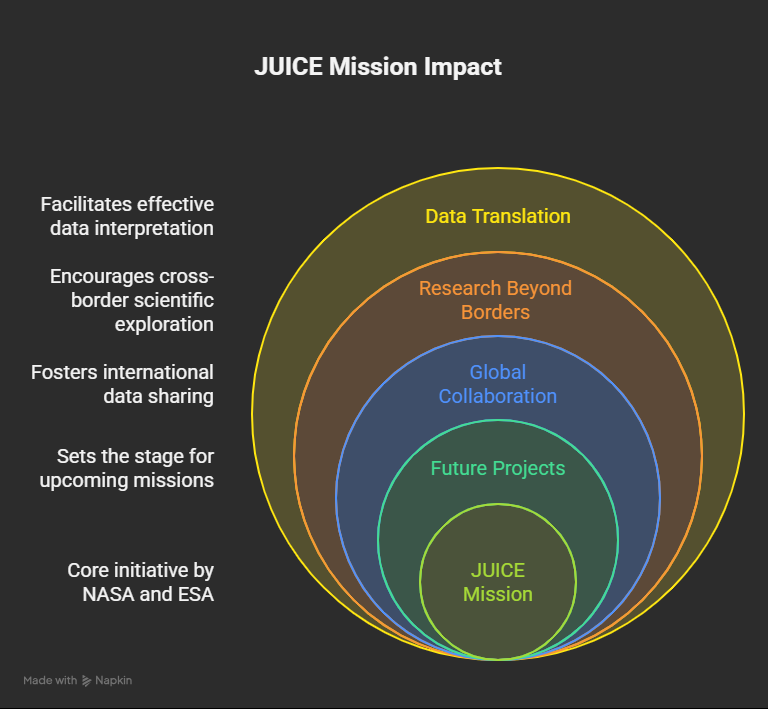
Potential of Discoveries Through JUICE
There are a lot of possibilities for leading discoveries through JUICE. It can provide insights about the solar system and future contributions to deep space explorations. Thus, it can make the future a lot brighter for research and exploration.
- Possibility of extraterrestrial life.
- Icy worlds as potential habitats.
- Future of deep space exploration missions.
Jupiter Icy Moons Explorer for the Future
JUICE’s mission is to inspire the next generation of scientists while contributing to the development of advanced technology. On top of that, the interplanetary exploration will have a positive impact on fostering positivity across the world. It’s a mission beyond borders and represents the curious aspect of the whole of mankind.
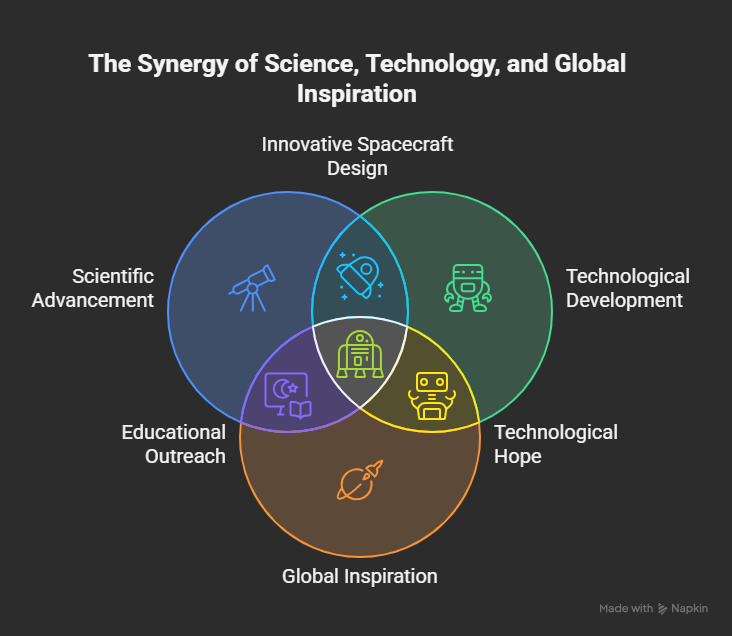
Final Thoughts On Jupiter’s Icy Moons Explorer
The Jupiter Icy Moons Explorer (JUICE) is a space mission launched by NASA and ESA on April 14, 2023, aiming to study Jupiter and its moons, Ganymede, Callisto, and Europa. The mission focuses on astrobiology, magnetic interaction on the planet’s surface, and the icy moons of Jupiter. Finally, the spacecraft will take around seven and a half years to reach Jupiter, and it is a mark of global scientific collaboration.
FAQs
How long will JUICE take to get to Jupiter?
The space explorer will take seven and a half years to reach Jupiter’s surface.
How big is Jupiter’s icy moons Explorer?
The explorer has an area of 85 square meters and a total of 23,560 solar cells.
Why is JUICE going to Ganymede?
Jupiter Icy Moons Explorer aims to study the surface of Jupiter’s moons for astrobiological research.
How fast is JUICE travelling?
The space explorer is travelling at a speed of 180m/s.

